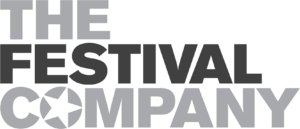Large projects can be daunting. At The Festival Company, we have big projects daily; that’s what event management is. It’s like creating mini-businesses within our business, on repeat. When our company first opened, it was one person dreaming about bringing like-minded people together, around shared experiences. Since then, we’ve grown to over 20 annual events, each with its own personality, not to mention the curveballs that come in day-to-day operations. Just thinking about it is enough to make someone want to hide under the covers – but don’t! It’s all about taking the best next step. Here are our three main tools we use when we’re working on a development project.
“Get Quiet to Get Loud”
When we are working on a really cool concept, it’s easy to get carried away in the big vision and forget about the details. So before we start anything, we need to get quiet, focused, and map out what we are really doing.
-
What: What are we doing? What does it feel like? What tools do we need?
-
Who: Who is the project lead? Who else do we need to bring in? Who are we speaking to?
-
Where: Where will this take place? Where will we execute? Where will we find the clients?
-
When: When will this take place? When will we roll this out? When do we need to begin each next step?
-
How: How much will this cost/yield (budget)? How will we get this accomplished? How will we go to market?
“Begin at the end”
Now that we know what we are doing, who we will need, where it will take place, when we will do it, and how we will do it, it’s time to start mapping the project out. We always begin with the end in mind (thanks, Simon Sinek).
-
List out all of the major functions you will need. These will be unique to each project, but there are some big buckets that usually stay the same: Operations, Accounting, Marketing, Communications, Suppliers Needed, etc. For us, each event can be intricate, so we add in Vendor Management, Talent, Sponsorships, etc.
-
Now that you have your list, you can list out the most important ones first and the final ones last. So you may start with your Marketing (Logo, Web, Communications and Marketing Plan, Assets, Brand Guidelines, Sales tools, etc.). The last things you need may be the week of launch schedule, testing, etc. Again, each project is unique, but you need to list out what is most important first and then what are the small touches for the end.
-
Break your project cycles into 90-day BIG ROCKS. This means items that will take some time but need to be completed in the next 90 days. These items will also have priorities. From there, you can map out your 30-day items, weekly, and then down to daily.
“KISS It”
Keep it simple, stupid. An old mantra that really works in business. Sometimes we get so caught up in the minutia that we forget the big picture. The simpler, the better to keep the project clear. With each big rock, remember to build a strong why behind why you want it. What is the result you need? What is the Project/Task at hand? What is your action plan?
Of course, every project is different, and there can be a lot of moving parts. With that said, these three simple steps can keep you on track and focused on getting the right things done. After 10 years in the event space, and numerous glitches, we can tell you that this system really does work. Discipline and accountability are key.
If you’re someone who has been tasked with taking on an event, don’t worry, we’ve got your back. Join our community of other organizers and receive weekly tips on how to create a lasting experience. If you need additional help, don’t hesitate to reach out to us at [email protected].
We would LOVE to hear from you.



